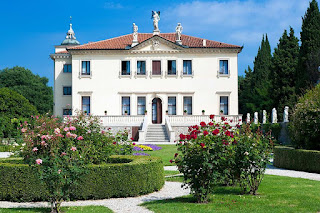Versatile painter decorated churches and produced acclaimed portraits
 |
| Zucco's San Diego e la Vergine in the Bergamo church of Santa Maria delle Grazie |
Zucco painted both secular and religious subjects after he had trained as an artist and learnt about technique from other Bergamo painters, such as Giovanni Paolo Cavagna and Enea Salmeggia. Art critics have compared the quality and style of his portrait painting to that of Veronese and Giovan Battista Moroni.
The artist was born at some time between 1570 and 1575 in Bergamo. He is known to have studied art at the workshop of the Campi brothers in Cremona and afterwards returned to live in his native city, where he associated with other painters working in Bergamo at the time.
Even if he was never a pupil of the Bergamo portrait painter Giovan Battista Moroni, art experts believe Zucco must have studied the artist’s works closely. He also formed strong personal links with Cavagna and Salmeggia. They all lived close to each other in Borgo San Leonardo, the artists’ quarter in Bergamo’s Città Bassa.
As he matured, Zucco began to dominate the artistic scene in Bergamo and painted many religious works of art. His success began in 1592 with his painting, la Circoncisione di Gesù - the Circumcision of Jesus - for a church in Stezzano in the province of Bergamo. It was a work that revealed signs of the training he had received from the Campi brothers at their workshop in Cremona.
The following year, Zucco painted Vergine con bambino e santi (Virgin with Baby and Saints), and L’adorazione dei Magi (the Adoration of the Magi) for the Church of Santi Pietro e Paolo, in Levate in the province of Bergamo. The painting of the Magi was signed Franciscus Zucchis 1593, indicating that he had already achieved artistic fame, with a style similar to that of Moroni, while maintaining the strength of design reminiscent of the Campi brothers.
 |
| Ritratto di gentildonna gravida can be seen in the Accademia Carrara |
In the years that followed, there were many paintings for other churches in the province but in Bergamo itself, Zucco painted for the Church of Santa Maria delle Grazie, the Basilica di Santa Maria Maggiore and the Monastero di Astino.
For his own local church, Sant’Alessandro in Colonna in Via Sant’Alessandro, named after Bergamo’s patron saint, which was near where he lived in Bergamo, Zucco painted a Cycle of the life of Sant’Alessandro and his last known painting, Sant’Alessandro si presenta ad un Vescovo (Saint Alexander is Presented to a Bishop) which was dated 1627.
Zucco married Aurelia Chiesa and they had three children, Bartolomeo Carlo, born in 1617, and Margherita and Giovanni Battista, who were born in 1623. Sadly, Zucco did not live long enough to see his children grow up. He died on May 3, 1627 at his home in Bergamo.
Examples of his religious paintings can still be seen in the Basilica of Santa Maria Maggiore in the Città Alta in Bergamo and in many other churches throughout the province of Bergamo. The Accademia Carrara in Bergamo have some of his portraits on display, such as the acclaimed Ritratto di gentildonna gravida (Portrait of an Expectant Gentlewoman).
 |
| The art treasures of the Accademia Carrara are a major attraction for visitors to Bergamo |
The Accademia Carrara, a palace filled with art treasures, is a major attraction in Bergamo. The art gallery, just outside the Città Alta in Piazza Giacomo Cararra, was built in the 18th century to house one of the richest private collections of art in Italy and now houses some of the portraits painted by Francesco Zucco. It is the only Italian museum to be entirely stocked with donations and bequests from private collectors. Visitors can view a broad-ranging collection of works by the masters of the Venetian, Lombard, and Tuscan Renaissances as well as great artists who came later, such as Lotto, Titian, Moroni, Rubens, Tiepolo, Guardi, and Canaletto. The Accademia Carrara was established in Bergamo in 1794 as a combined Pinacoteca (art gallery) and School of Painting on the initiative of Bergamo aristocrat Count Giacomo Carrara. In addition to his collection of paintings he left his entire estate to the Accademia to secure its future. From being a museum dedicated to Renaissance painting, the Accademia grew into an art gallery that also provided a broad representation of pictorial genres from the 17th, 18th, and 19th centuries. Among the highlights are a Madonna and Child by Andrea Mantegna; Portrait of Leonello d’Este by Pisanello; Madonna and Child by Giovanni Bellini; Portrait of an Elderly Man Seated by Giovan Battista Moroni and The Grand Canal from Palazzo Balbi by Canaletto.
 |
| The church of Sant'Alessandro in Colonna in Bergamo |
A Roman column in front of Chiesa di Sant’Alessandro in Colonna is believed to mark the exact spot where Bergamo’s patron saint was martyred by the Romans for refusing to renounce his Christian faith. The column in Via Sant’Alessandro in Bergamo’s lower town was constructed in the 17th century from Roman fragments. Every year on August 26, Bergamo remembers their patron saint’s decapitation there in 303. The church of Sant’Alessandro in Colonna was rebuilt in the 18th century on the site of an earlier church. Its ornate campanile (bell tower) was completed at the beginning of the 20th century. The church houses some works by Francesco Zucco, as well as a work depicting the Martyrdom of Sant’Alessandro by Enea Salmeggia and one showing the transporting of Sant’Alessandro’s corpse by Gian Paolo Cavagna. It also contains paintings by Lorenzo Lotto and Romanino.
Also on this day:
1461: The birth of Cardinal Raffaele Riario
1469: The birth of writer and diplomat Niccolò Machiavelli
1764: The death of writer and art collector Francesco Algarotti
1901: The birth of actor Gino Cervi



_-_2021-08-30_-_1.jpg)






.JPG)


.jpeg)
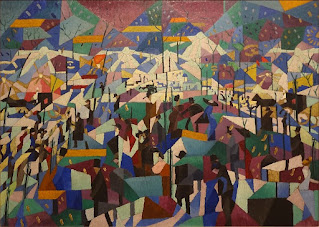




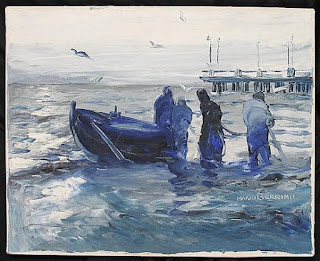
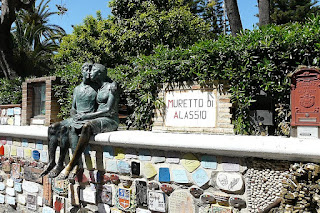
.jpg)

.PNG)
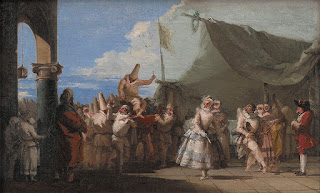
_-_VIA_CRUCIS_II_-_Jesus_carries_his_cross_by_Giandomenico_Tiepolo.jpg)
